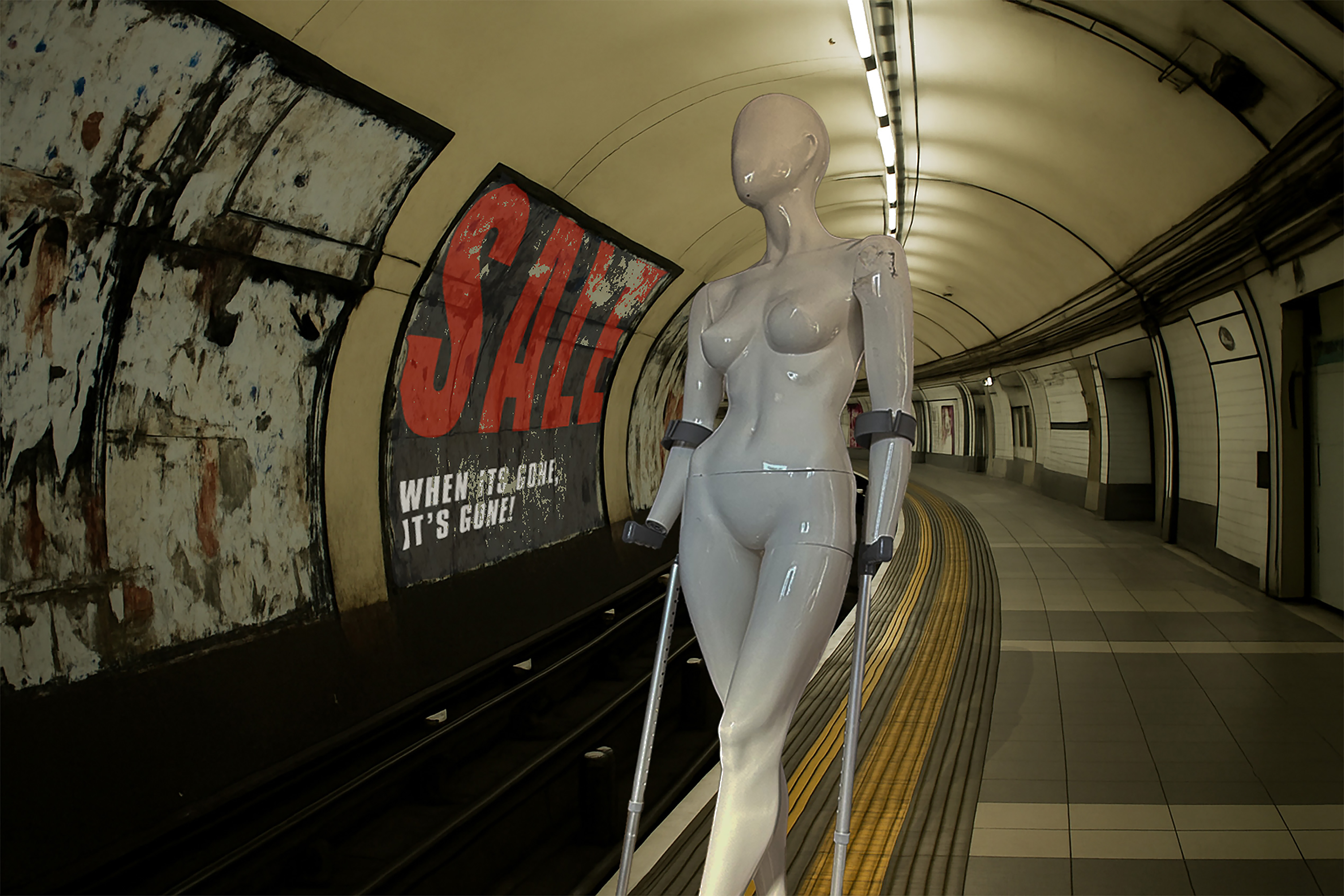Conceptual Overview
Central Line stages a solitary mannequin within the architecture of London’s underground – a space of transit, repetition, and psychological saturation. A billboard hangs behind the mannequin with the retail slogan “When it’s gone, it’s gone!”, now faded and absorbed into the decay of the empty tunnel. This work expands on my use of mannequins to represent the dehumanising effects of aspirational consumerism, particularly as it relates to the fashion and beauty industries.
Mannequin as Symbol of the Human Body
Although the figure is a mannequin, it is also intended to be read as symbol. It stands in for consumers under the pressure of unattainable ideals – ideals originally projected by mannequins themselves. These figures were created as stylised, perfect clothes horses: blank enough to be universal, beautiful enough to be aspirational.
But in this work, I reverse their function. The mannequin is no longer an ideal, but a casualty of the very system it was designed to support. Upright on crutches, it symbolises how consumers hobble along behind beauty standards that were never designed to be reached – manufactured in a vacuum of marketing speak, product launches and sales forecasts, then sold back to us as reality. No matter how much we spend on wardrobe, wellness, or cosmetic surgery, the ideal remains out of reach.
Locational Significance
The title Central Line is deliberately chosen. It refers not only to the transport system but to the central artery of British retail – a line that connects the outer edges of the city with stops like Oxford Circus, home to one of the world’s most iconic retail corridors. This places the work in direct dialogue with the physical infrastructure of consumption: the flow of consumers toward goods, the daily pilgrimage to the unattainable.
By placing a broken mannequin in this space, I expose the ultimate cost of that journey – what it takes to be seen, to belong, or to be beautiful in a system that profits from our perpetual insufficiency.
Form, Language, and Critique
The billboard’s slogan – “When it’s gone, it’s gone!” – is drawn from retail marketing but repurposed here as something more mournful. In context, it becomes an elegy for authentic selfhood, agency, or even hope. The pairing of this language with a bodily stand-in deepens the tension between commercial desire and lived experience.
This work lives between photography and propaganda – between fashion editorial and surveillance footage. It builds on my billboard and flyposter studies, but distils their visual language into a tighter, more psychologically charged frame, and a continuing contrast to Slim Aarons.
Reflection
This piece clarified the stakes of my project — not just a critique of capitalism, but a portrait of the human cost of commodification. The mannequin, once aspirational, is now just an afterimage, propped up in the void of progress. It is not what we want to be. It is what we are left with.
